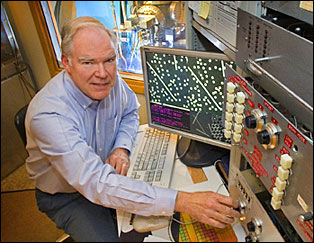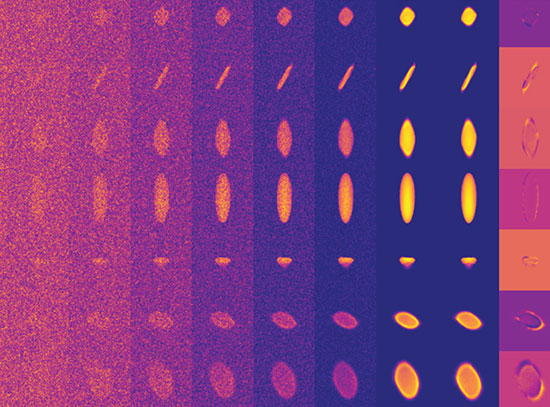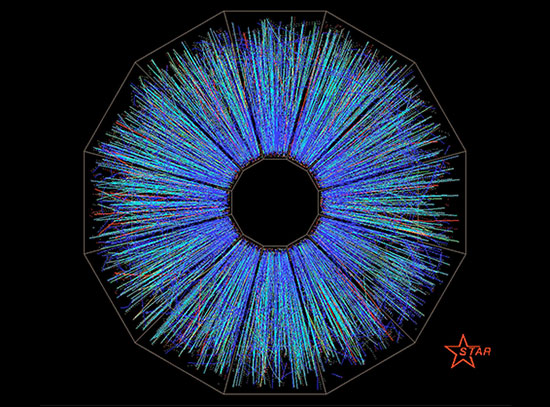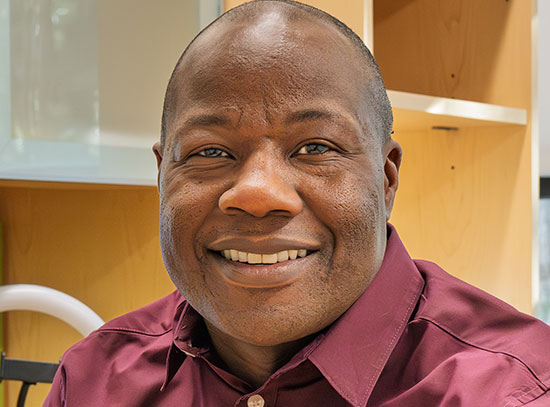Brookhaven Lab's Joseph Wall Receives 2006 Award from the Microscopy Society of America
April 27, 2006
UPTON, NY - Joseph Wall, a senior biophysicist at the U.S. Department of Energy's (DOE) Brookhaven National Laboratory, has been selected to receive the 2006 Distinguished Scientist Award for the Biological Sciences, the highest honor bestowed by the Microscopy Society of America (MSA), an affiliate society of the American Institute of Physics. The award is given for internationally recognized research accomplishments and distinguished contributions to microscopy. Wall will receive the award at the 64th annual meeting of MSA on August 2.
Wall is largely responsible for developing Brookhaven's Scanning Transmission Electron Microscope (STEM), one of only a few microscopes in the world that can image single heavy atoms. In addition to DOE, the National Institutes of Health has supported STEM as a Biotechnology Resource since 1971, enabling 50 researchers per year from various research facilities and universities to use STEM to view biological specimens. STEM allows researchers to view specimens without staining or shadowing them. It also enables scientists to determine the masses of individual proteins and DNA molecules.
Wall commented, "I am pleased to be chosen for this award, and I am gratified that STEM is still a very useful instrument for studying biological specimens, even after almost 30 years of operation. I give credit to my excellent team who operate STEM, help with improving it, and keep it running well."
With a resolution of 2.5 angstroms (2.5 ten-billionths of a meter), STEM can magnify samples up to ten million times. Wall explained that the microscope is uniquely suited for measuring long, thin objects. For example, researchers using STEM have observed prions, infectious proteins that are associated with Mad Cow Disease, and have also viewed filaments formed by a defective protein that accumulates in the brain of people with Alzheimer's disease. The information researchers gain from viewing these structures on the atomic scale may lead to better understanding of how they function.
Wall is currently rebuilding the computer system for STEM, and, collaborating with Brookhaven scientists Vyacheslav Volkov and Yimei Zhu, he is working on imaging simulation to make better microscopes, with the goal of being able to see small catalysts and magnetic materials on the atomic scale. Also among Wall's current research projects is his work on the next-generation Transmission Electron Aberration-corrected Microscope, an electron microscope with 0.5-angstrom resolution, allowing researchers to observe the atomic-scale order, electronic structure, and dynamics of individual nanoscale structures.
A native of Madison, Wisconsin, Wall earned a B.S. in physics from the University of Wisconsin, Madison, in 1964, and a Ph.D. in biophysics from the University of Chicago, in 1971. Wall, with colleagues, completed development of the first STEM in 1970 and demonstrated the first imaging of single atoms with an electron microscope. From 1971 to 1973, he was a research associate at the Enrico Fermi Institute at the University of Chicago. In 1973, he joined Brookhaven's Biology Department as an assistant biophysicist, and, by 1977, he constructed a new STEM optimized for biological specimens. Wall rose through the ranks to become a senior biophysicist in 1980. He received DOE's Ernest Orlando Lawrence Memorial Award in 1988 for his contributions to the development and application of STEM, and the creation of the STEM user facility, which makes the technology available to a broad community of scientists.
NOTE TO EDITORS: Joseph Wall is a resident of Southold, NY.
2006-10483 | INT/EXT | Newsroom










